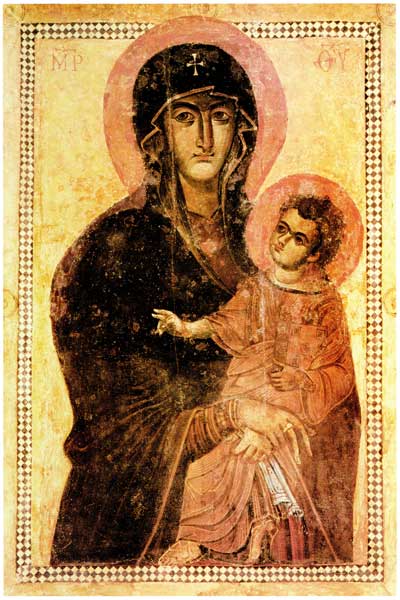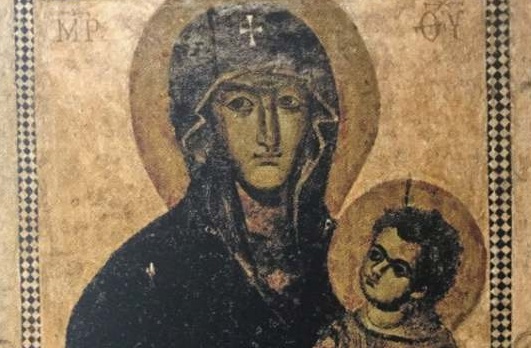
This week’s icon has a very special distinction compared to most of the icons we have previously spotlighted: this icon was not written (that is, made) by human hands.
Tradition tells us that when the Apostles Peter and John were preaching in the city of Lydda, near Jerusalem, they built a church in honor of the Theotokos. When they returned to Jerusalem and asked the Most Holy Mother to come sanctify the church, she told them to go before her, and that she would be there with them.
When the Apostles returned to the church in Lydda they were amazed to see that an icon of Mary with the Christ Child was imprinted onto the wall (some say, a pillar) of the church.

The striking appearance of this icon, in full-color no less, had already begun to attract many pilgrims. And when the Theotokos herself honored the church with her presence, she was so pleased at the number of the faithful, that she granted the icon the ability to work miracles.
In the 4th century, when Julian the Apostate heard of the icon, he sent stone masons to eradicate it. However, the more the tools chipped away, the more lines of the image seemed to drive themselves deeper into the stone. When news of the indestructible icon spread, millions came to venerate it.
In the 8th century, St. Germanus (the future Patriarch of Constantinople), had a copy of the icon produced when he passed through Lydda. During the Iconoclastic Period this copy was sent to Rome (from whence it receives its alternate name) and placed in the church of St. Peter, where it was responsible for many healings.
The Roman icon was returned to Constantinople on June 26 842. The whereabouts of the icon were still known as late as the 9th century.




